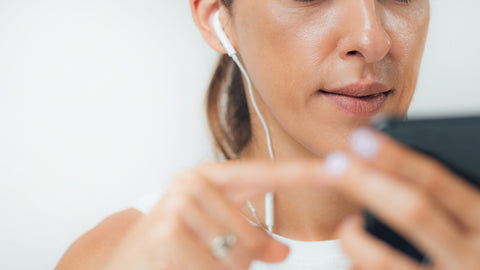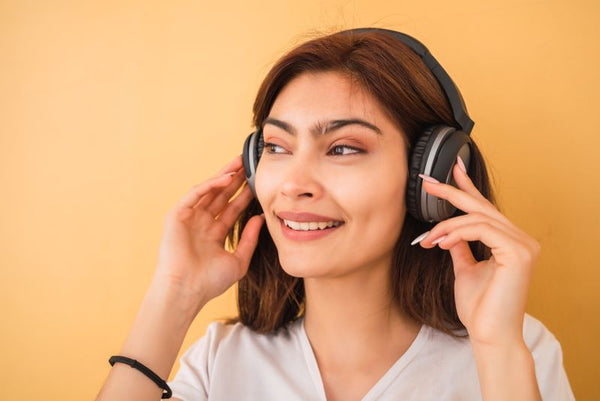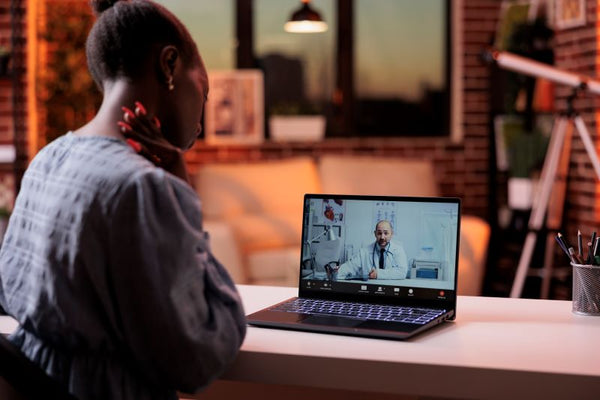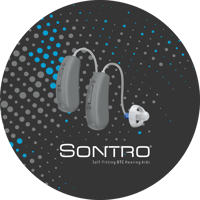4 min read The field of hearing aids has witnessed remarkable progress in recent years. This is due...
Technology Is Revolutionizing Aural Rehabilitation
4 min read
How Technology Is Revolutionizing Aural Rehabilitation
In healthcare, technology has been driving transformative advancements. Technological innovations impact various fields, from artificial intelligence in diagnostics to telemedicine for remote care. Aural rehabilitation, helping people with hearing loss regain auditory function and improve communication, is no exception. In recent years, there has been remarkable development in aural rehabilitation.
We’re here to delve into the exciting ways technology is revolutionizing aural rehabilitation, unlocking new possibilities for people with hearing impairments. We will explore the impact of cutting-edge devices, software applications, and digital platforms revolutionizing the assessment, treatment, and management of hearing loss. By harnessing technology and encouraging resource utilization, we are witnessing a shift in how people with hearing impairments reclaim their auditory abilities and enhance their overall quality of life.

Advancements in Diagnostic Tools
One area where technology has made significant strides in aural rehabilitation is the development of advanced diagnostic tools. With the help of sophisticated equipment, audiologists can conduct detailed hearing tests, enabling them to identify the nature and extent of the hearing loss. This diagnosis helps develop personalized rehabilitation plans that target individual needs. Here are some hearing frequency tests and other methods currently used by auditory specialists.
Pure Tone Audiometry
This is the most common hearing test and is often considered the gold standard. Pure tone audiometry is a frequency hearing test that measures a person’s hearing thresholds across different frequencies, typically ranging from 250 Hz to 8,000 Hz. During this frequency hearing test, a person wears headphones to hear various tones at various frequencies and volumes. They respond by indicating when they can hear the sound. Pure tone audiometry's only concern is that it doesn’t always catch hidden hearing loss.
Speech Audiometry
This test evaluates an individual's ability to understand and discriminate speech. It assesses speech reception thresholds (SRT), which make up the softest level a person can understand speech, and word recognition scores (WRS), which measure the percentage of words correctly identified.
Tympanometry
Tympanometry is a test that measures the eardrum's movement in response to changes in air pressure. It helps evaluate the health and function of the middle ear and can detect conditions such as eustachian tube dysfunction or middle ear fluid.

Otoacoustic Emissions (OAEs)
OAEs are sounds generated by the inner ear in response to sound stimulation. This test measures these emissions’ presence and strength and is often used to assess the functioning of the outer hair cells in the cochlea. OAEs are particularly useful in screening hearing loss in newborns and young children.
Auditory Brainstem Response (ABR)
ABR measures the auditory nerve’s electrical activity and brainstem in response to sound. It is commonly used to evaluate hearing in newborns, young children, and people with difficulty participating in traditional hearing tests.
High-Frequency Audiometry
This test assesses a person’s hearing sensitivity in frequencies higher than the standard range. It is beneficial in detecting early signs of noise-induced hearing loss.
Bone Conduction Testing
Bone conduction testing assesses a person’s ability to hear sounds transmitted through bone vibrations. It helps determine if the hearing loss is due to a problem in the outer/middle ear or the inner ear.
Tele-Health Advancements
Moreover, technology has revolutionized resource utilization in aural rehabilitation. Audiologists can now use digital platforms and software applications to administer hearing tests remotely, allowing for greater accessibility and convenience. This remote testing capability has become especially significant during the COVID-19 pandemic. By taking advantage of this technology, people can undergo hearing tests from the comfort of their homes, ensuring continuity of care and timely intervention.
Innovative Hearing Aid Technology
Hearing aids have undergone remarkable advancements in recent years. Modern hearing aids have sophisticated features that enhance sound quality, minimize background noise, and adapt to various listening environments. Digital signal processing algorithms analyze incoming sounds and adjust amplification settings, providing personalized listening. These technological advancements improve speech understanding and make conversations more apparent and enjoyable for individuals with hearing loss. Additionally, the availability of OTC hearing aids has allowed for affordable, cutting-edge hearing aids!
Advances in Software Technology
Software technology is also revolutionizing aural rehabilitation, providing people with additional support. OTC hearing aids use software technology to enhance sounds and improve speech perception. For example, Soundwave offers the otoTune® app, which allows customization and provides up-to-date resources.
In addition, other smartphone apps are powerful tools for aural rehabilitation. These apps offer various functionalities, including customized sound amplification and speech-to-text conversion. People can leverage these apps to practice listening exercises, track their hearing progress, and access valuable information on managing their hearing loss.
Teleaudiology and Remote Rehabilitation
Teleaudiology has emerged as a valuable avenue for aural rehabilitation, allowing people to receive remote care and support. Through videoconferencing, people can connect with audiologists and receive virtual consultations, counseling, and guidance. This remote approach ensures you can access timely support regardless of location.
Teleaudiology also enables remote programming and adjustments, eliminating the need for frequent in-person visits. By remotely fine-tuning hearing aid settings, audiologists can ensure performance and address any concerns or difficulties. This approach enhances convenience, saves time, and increases efficiency.

Trust Soundwave’s AI Model
Technology is revolutionizing aural rehabilitation, and Soundwave supports your hearing health! Soundwave, a leader in hearing aid technology, is revolutionizing how people with hearing loss perceive and interact with sound. With our innovative solutions and cutting-edge advancements, we’re transforming hearing aid technology.
Soundwave is revolutionizing hearing aid technology through our focus on customization. With state-of-the-art processing algorithms, Soundwave’s Sontro® Self-Fitting OTC Hearing Aids adapt to different environments, adjusting to reduce background noise and enhance speech clarity. We also offer four complementary weeks of Amptify, a 12-week rehabilitation program with listening activities for auditory therapy. It helps your brain optimize and adjust to amplified sound for improved auditory processing speed, auditory attention, and auditory memory. We understand that each person’s hearing needs are unique and offer personalized solutions. This customization ensures you can enjoy more natural and personalized listening, resulting in improved communication and overall quality of life.
Soundwave's dedication to research and development is a testament to our commitment to innovation. We are constantly pushing the boundaries of technology, exploring new possibilities. By staying at the forefront of advancements, we incorporate the latest breakthroughs into our devices, ensuring you can access the most advanced, effective solutions.
Ensure you’re up to date with the latest in hearing health with Soundwave! Soundwave prioritizes user experience and accessibility. Our hearing aids have user-friendly interfaces and ergonomic designs, ensuring comfort and ease. Plus, we highly encourage resource utilization so that users stay educated on our advancements.



